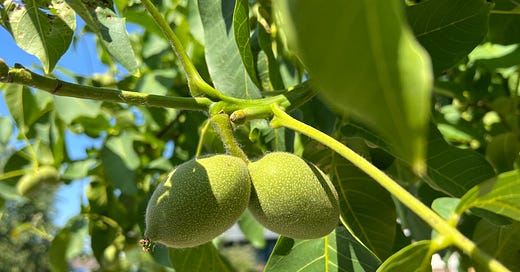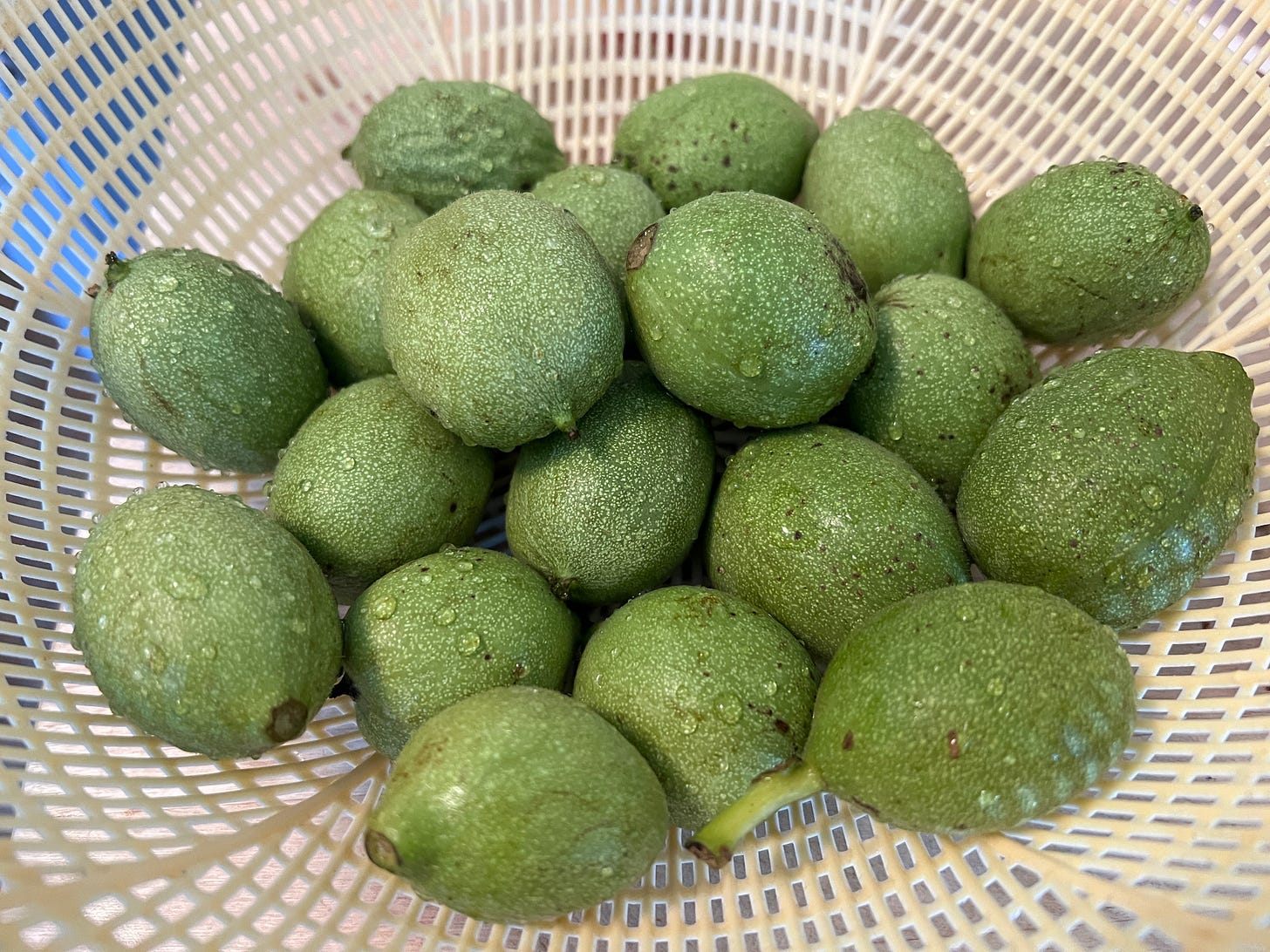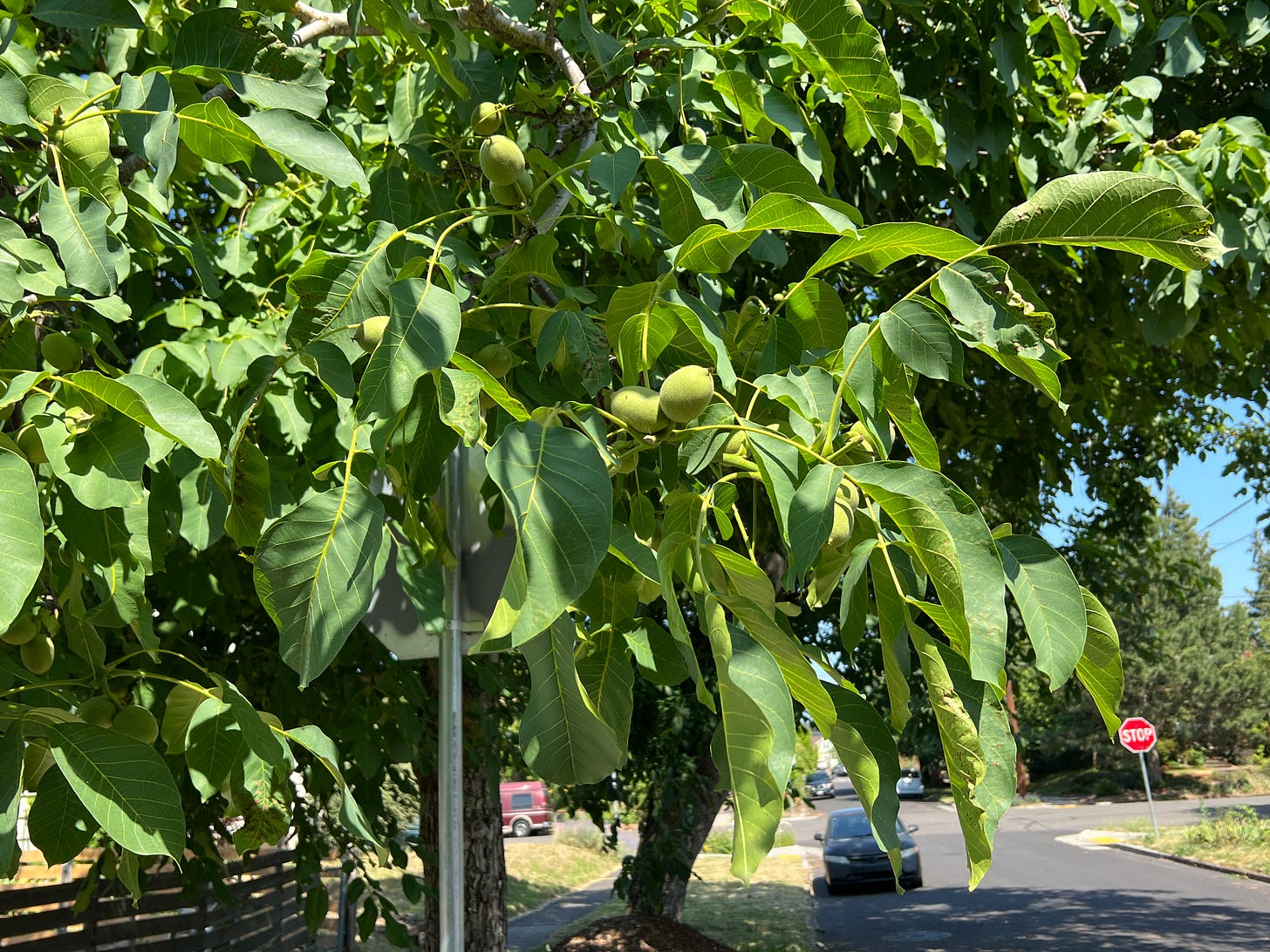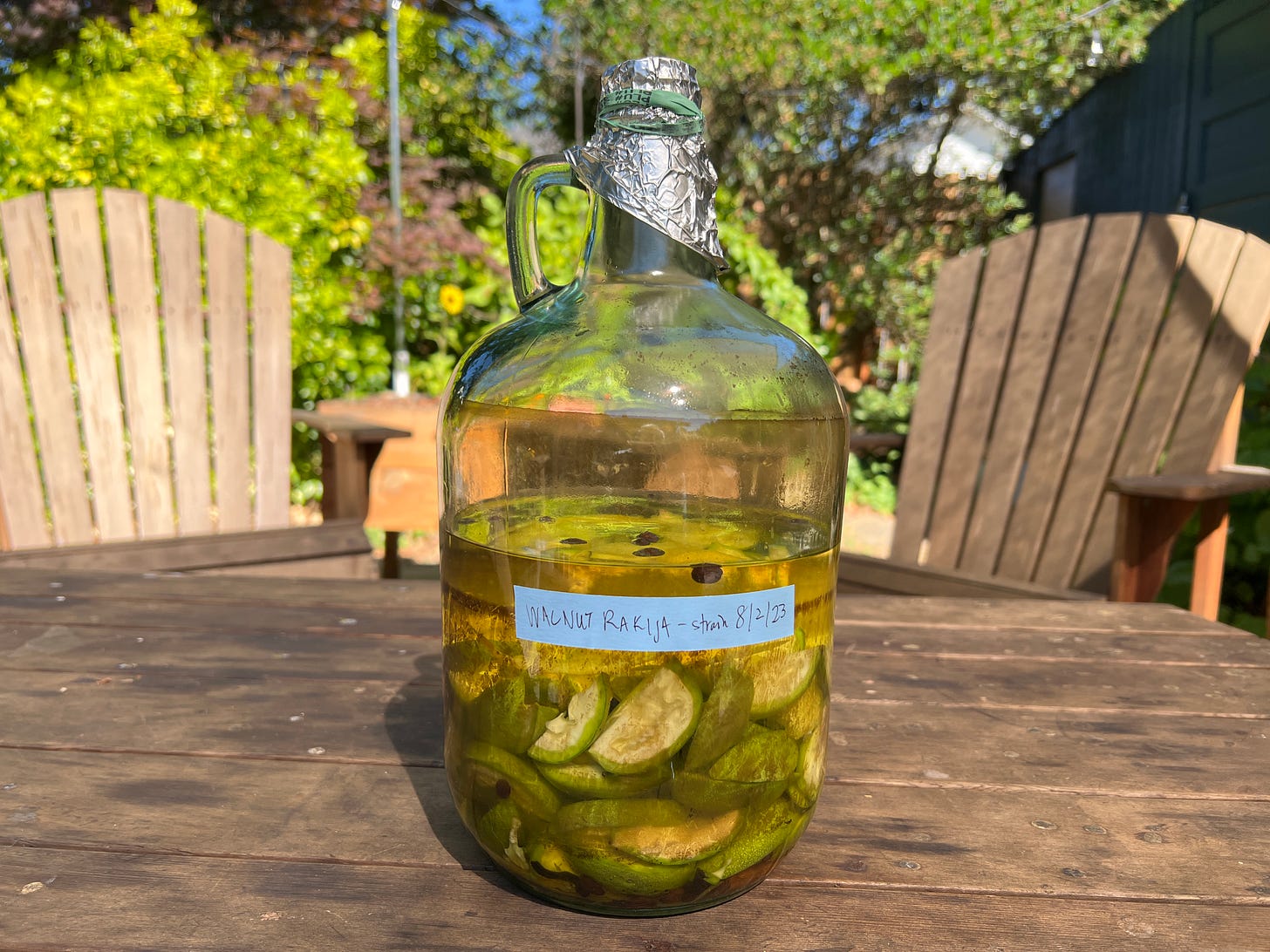Last year, Portland's nut trees betrayed me.
I spent all spring and early summer monitoring street trees I wanted to harvest. I checked websites a dozen times to confirm that two of the chestnut trees near my house belong to the edible Castanea genus, rather than the toxic Aesculus (horse chestnuts). I greedily watched clusters of hazelnuts swelling on a neglected tree. And for the third year in a row, I planned to make my annual batch of green-walnut liqueur.
But in 2022, I learned a few hard lessons about harvesting nuts:
1. Squirrels pay closer attention to hazelnut trees than I do, and those assholes will strip a tree before the nuts are ready for humans to eat.
2. Chestnut trees are not self-pollinating. Arbor Lodge's only two Castanea trees are a quarter-mile from one another, meaning they both shoot blanks, so to speak (spiky nut casings with no meat inside).
3. Walnuts are biennial bearers, producing heavy crops one year and lighter crops the next. The 2021 heat dome may have sent every tree in Arbor Lodge into retreat mode for 2022. None of my normal trees produced more than a couple of nuts—and after scouring the neighborhood for weeks, the only nut-laden walnut tree I spotted was locked away behind a fence.
The lack of green walnuts was the biggest disappointment of 2022, since walnut liqueur was my first neighborhood-gleaning project after I moved to Portland in 2019. In the weeks before we headed north from San Francisco, we traveled to Serbia, where Christian's ancestors are from. There, we fell in love with rakijia (rah-KEE-ya), a large class of artisanal brandies and liqueurs. Quince. Apricot. Honey. Walnut. In fact, we brought a bottle of orahovača—a satiny, resinous walnut rakija—home with us.
In America, food writers like to call green-walnut liqueur nocino, but I've never sipped nocino in Italy. In the summer of 2020, after picking the walnuts by our friend Loree's house, I made an online nocino recipe, then declared the finished liqueur to be 100% Balkan.
Portland is covered in walnut trees, a mix of English walnuts, Eastern black walnuts, and Claro walnuts (native to California), as well as a variety of hybrids and grafted trees.
In her audio series profiling Portland's Heritage Trees, JoAnne Hermens says that early European settlers in Oregon planted walnuts on their property for both the nuts and the fine wood. In 1919, she adds, one Oregonian distributed bags of black walnuts that had been harvested from the trees growing around George Washington's grave. Schoolkids around the state planted the nuts on Washington's birthday.
The city's walnut trees are majestic. Sturdy. Healthy. And like so many food-bearing trees that city dwellers planted in the early 20th century, walnuts have become a nuisance to 21st-century homeowners, who must clear their lawn of rotting, fabric-staining nuts every fall.
This year, they'll have quite a task on their hands, because Portland is awash in green walnuts. After a year off, the trees are producing so many nuts that the branches slump under the weight. Locals: The time to pick green walnuts for nocino/rakija is right now—when the nuts are large and firm, but before the interior shells harden.
I only need 20 nuts for my rakija recipe. Last Friday, I walked down the street and spent five minutes lightening a few droopy branches, which seemed to wave their thanks as they rose back into the air. (Then I stopped by a community garden on the way home to snip off a few fig leaves to wrap around feta for grilling.)
For the third time now, I’m basing my rakija on Sammy Durham's nocino recipe on Life in Abruzzo. Every year I tweak the recipe, forgetting just how I tweaked it the last time around. The sole constant is that I macerate chopped green walnuts in 1.5 liters of Ghost from the Vine, Stone Barn Brandyworks' double-distilled, 150-proof grape brandy. It's a bit of a splurge, but the clear brandy makes a beautiful, local base spirit. (If you don't want to make your own, Stone Barn makes a lovely nocino as well.)
The one-gallon jug I use for rakija is now permanently striped with brown walnut stains. Strips of lemon zest, allspice berries, and coffee beans float on the surface of the clear brandy, which grows murkier every day. After 30 days, I'll strain the cola-hued liquid off the walnuts. In another three months, I'll add simple syrup, made with brown sugar, to give the liqueur a caramel richness, plus a little extra distilled water to proof the liqueur down to human-safe alcohol levels. Around the new year, I'll take a first sip, grimacing at the grating potency of the tannins, and stick the bottle back in the cellar for another six months to mellow.
Perhaps, it turns out, I was meant to be a biennial walnut rakija producer. I made so much in 2021 that I still have two bottles left. Walnut liqueur grows softer and more delicious with time, and so the 2021 version is just right for drinking and sharing with friends. There's no urgency to drink what I'm currently making until 2025. This year, I actually documented my recipe, so by the time the walnut trees are overproducing again, I'll know how to make it even better.









I make my nocino here at my home in N. Central Bulgaria.
Rakia is Bulgaria`s national spirit. Here it is always a spirit normally based on fruits. It is never a liqueur although, with additions. it can become one. I`m currently experimenting with herbal ones.
Walnuts and herbs abound on my own land. These days I make cordial from my grapes.
I feel so lucky!
Cannot wait to taste it!